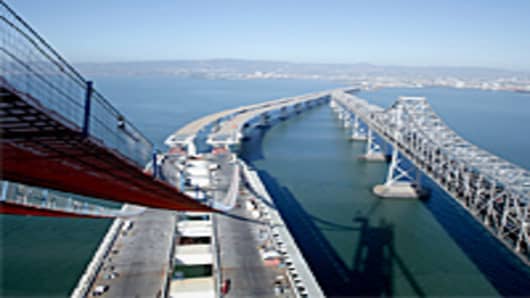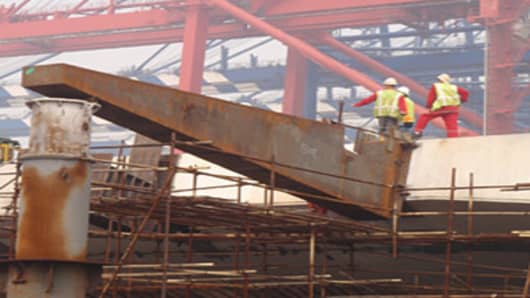The coming of the next “big one” led to the use of Chinese steel in the rebuilding of a national icon - one of the busiest bridges in the world: The San Francisco-Oakland Bay Bridge. Looming natural disasters, willful neglect and infirmity of America’s infrastructure demand our rebuilding. Reconstruction, however, is going to require Sino steel.
Politics have stirred up a media storm over the use of foreign steel in the Bay Bridge. Misplaced anger by a few jeopardizes US national security. Slowing down the strengthening of vital Homeland Security links over objections to the origin of steel fabrication creates risk.
American steel is excellent. So too are the skills of our metallurgists. That’s not the point. Three issues are driving the use of foreign steel over domestic steel: capacity, capacity, capacity.
We the people of the United States fabricate less steel than the island nation of Japan, currently putting out 7% of the world’s metal materials. China forges nearly half of the world’s steel. Today, the Peoples Republic of China (PRC) is building the greatest bridges in the world with the longest spans while using the most modern metallurgy methods. The Middle Kingdom is the undisputed leader in steel production.
Lives are on the line as we defer work on fracture-critical, structurally deficient, and functionally obsolete bridges. America needs to tap into the best of the world market’s steel production capacity. This too helps save a precious resource known to many as money.
The Tappan Zee Bridge crossing the Hudson River in New York is similar to the East Span of the Oakland- San Francisco Bay Bridge that’s being replaced. They’re both structurally deficient – in imminent danger of collapse. The two are nearly identical in length – roughly three miles long – requiring an enormous capacity of steel production - and money. Keeping the Tap’s rebuilding within the proposed $5 billion budget is unlikely without going overseas for steel.



